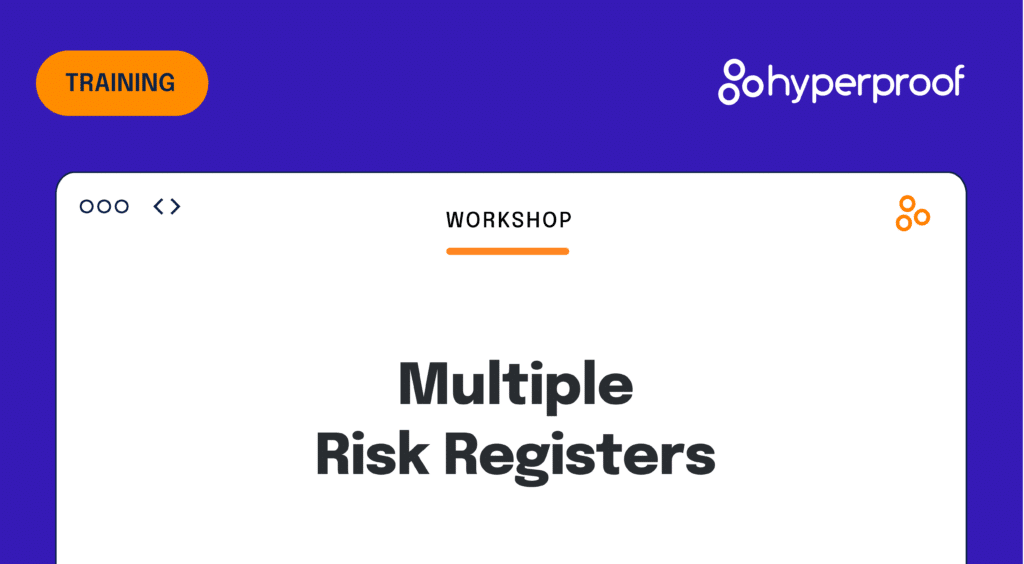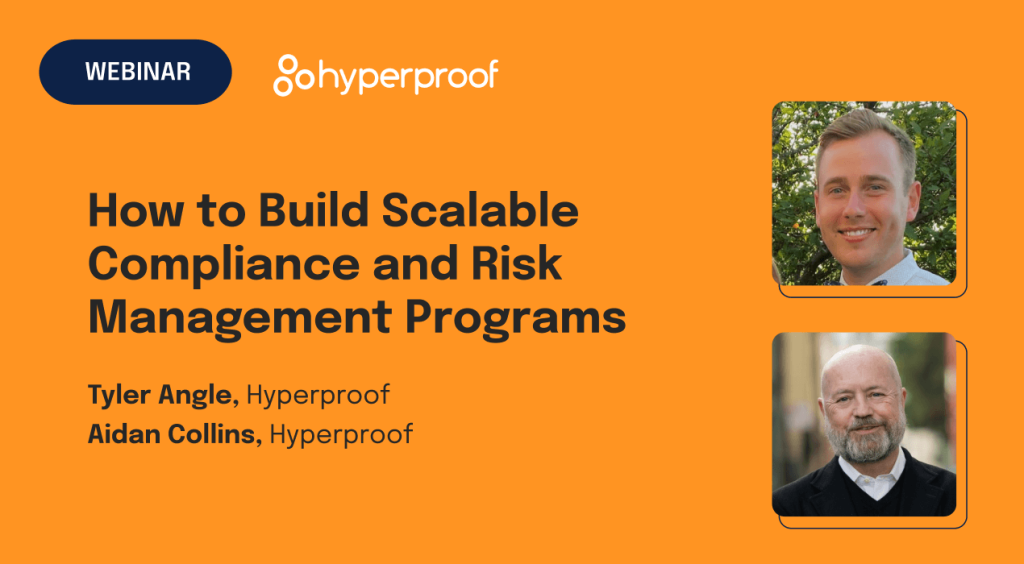What Are Your Current Compliance Operations Really Costing You?

There’s no question that building a strong, proactive risk and compliance program has become modern table stakes for doing business. New regulations and certifications, increased regulatory scrutiny, and the focus on cybersecurity risk management have all led organizations to invest a significant amount of time, money, and resources into their risk and compliance programs.
However, many business leaders view compliance as a cost center — a requirement of doing business rather than a function that can and should be a strategic business enabler. A significant part of the problem is that compliance teams are just trying to keep up with the demands put on them, and current approaches to risk and compliance are filled with manual and repetitive processes that eat up resources faster than companies can supply them. Teams get burnt out, overworked, and bogged down in security questionnaires, audit documentation requests, and more that take away time they could be spending on strategic initiatives.
Already, risk and compliance teams have too much to do, even while more is added to their plate by the day. This can and should change, and it starts by understanding just how much manual, outdated compliance operations are costing you.
Where does the money go? Getting an understanding of the true cost of compliance

Companies invest a significant part of their yearly budget into governance, risk, and compliance (GRC) with the baseline goal of anticipating and mitigating potential threats that could jeopardize financial health, reputation, or operational continuity. Spending money on risk and compliance is not just a matter of fulfilling regulatory and legal obligations, however. It’s a strategic investment that, when done well, protects a company’s future, fosters trust with stakeholders, and promotes sustainable growth.
Compliance budgets typically go toward:
- Staff salaries (Compliance Officers, Data Protection Officer (DPO), Chief Compliance Officer (CCO), etc.)
- Legal counsel
- Governance, Risk, and Compliance (GRC) teams
- Software and technology solutions
- Lobbying efforts
- Training and education
Hidden within these costs is an addressable reality. Hyperproof’s 2023 IT Compliance Benchmark Report found that compliance professionals today are burdened with administrative tasks, forcing them to focus on tactical problems rather than bigger, long-term challenges that support business growth. The average respondent reported spending 38% of their time at work on manual tasks.
Let’s look at a hypothetical example of how much manual compliance operations could be costing a business based on that 38% number.
Say that a compliance manager has 2,080 working hours per year. That equates to 15.2 hours per week spent on manual tasks, like data collection, reporting, and responding to queries from regulatory bodies.
At an average of $60 per hour (including salary, benefits, and overhead), this amounts to $912 per week or $47,424 a year. Multiply that across a compliance team of eight people, and the total spent on manual tasks is $379,392 — or the equivalent of three compliance manager salaries.
15.2 hours on manual tasks per week x $60 per hour = $912 per week
$912 per week x 52 weeks in a year = $47,424 per year
$47,424 per year x 8 person compliance team = $379,392 cost per year on manual tasks
Not factored into this equation are the additional cost savings compliance operations technology can bring by centralizing data, giving better insight into risk, and reducing the chances of human error.
For example, organizations reported losing between $1M-5M on data breaches in 2022. Hyperproof’s 2023 IT Compliance Benchmark Report found that 61% of companies that characterized their risk management approach as “ad-hoc” experienced a breach while 46% of those managing risk in siloed departments experienced a breach.
In contrast, only 30% of companies with an integrated approach and automated tools experienced breaches. The potential to save millions per year in data breach costs (including security team time to clean up, report, and address any investigations) and potential fines on top of the savings on manual processes quickly begins to make the case for investing in technology solutions that can streamline compliance operations and costs.
Building a mature compliance program to achieve optimal efficiency and control costs

According to our report, 57% of respondents expressed their intention over the next two years to dedicate more time and budget to IT risk management and compliance. Knowing what we know now, it’s important to spend those resources wisely — investing in automation and compliance operations software (not just in adding headcount) to free up existing staff to focus on strategic goals.
What does it look like when a company has the time and bandwidth to address risk and compliance strategically? Let’s look at two examples.
Outreach Streamlines and Automates Security Assurance Work: By using Hyperproof’s platform, Outreach, a market-leading sales execution platform, was able to create a single source of truth for compliance and automate routine, repetitive work, streamlining workflows and reducing work for teams across the organization. By the numbers, that led to a 75% reduction in audit prep time and a 50% reduction in time spent on evidence collection, collaboration, and project management. Read Outreach’s full story here.
Highspot Builds Continuous Compliance Program with Hyperproof: In another example, Highspot, a sales enablement platform, worked with Hyperproof to streamline their compliance and controls management work and simplify their vendor risk management process. By working with Hyperproof, Highspot was able to move out of spreadsheets and can now answer 150 vendor questionnaires annually through automation and manage 300 controls to proactively prepare for yearly audits. Read Highspot’s full story here.
The hidden costs of misalignment with your board

Once risk and compliance leaders get a handle on how to increase efficiencies in their compliance operations, there is still another area to tackle — explaining everything to a corporate board in a language they will understand. Not being able to communicate effectively and advocate for your security, compliance, and risk management program leads to misalignment of goals and priorities, which can turn into a hidden cost when risk and compliance teams aren’t able to secure the resources they need to support and sustain the business.
It all starts with explaining, in concrete terms, why it’s essential to track and measure risks. From there, the door opens to explain to the board how measuring risks and tracking their impact will directly reflect on the business. Modern GRC platforms provide board-level dashboards to contextualize and share the specific information boards need to see to meet their expectations and guarantee continued backing of risk and compliance initiatives.
What Hyperproof’s compliance operations platform brings to the table

Automation is about more than finding cost savings through taking manual or inefficient compliance processes off of a compliance team’s plate. The right compliance management platform operationalizes compliance and risk management, enabling you to automate workflows, prepare for audits, mitigate risk, and speak strategically to the board about the importance of your risk and compliance efforts.
Ultimately, this opens doors for companies to be proactive about risk and compliance and to look for business opportunities it can support, like expanding into new markets through adopting a new certification for a particular industry. That could be a framework like FedRAMP to secure government contracts or being prepared for your annual SOC 2 audit to demonstrate your commitment to security.
- Workflow automation tools to streamline your processes, like the ability to nudge stakeholders for evidence and alerts for risks, controls, or vulnerabilities that need your attention
- Automated evidence collection to ensure you only have to collect evidence once
- Controls cross walking so you can map controls across multiple frameworks
- Audit management tools to streamline audits, both internally and externally
- Risk registers to view and manage risks in one place
- Rich integrations to automate evidence collection and ensure evidence is always up-to-date
- Controls testing to allow continuous monitoring
- Issues management to track remediation tasks
- Dashboards and reporting to view your compliance posture at a glance and easily communicate it to stakeholders
Finally, the parting question: do you know how much your compliance operations are really costing you?
Our team would be happy to help you make an assessment. Get in touch with us at any time.
See Hyperproof in Action
Related Resources
Ready to see
Hyperproof in action?












